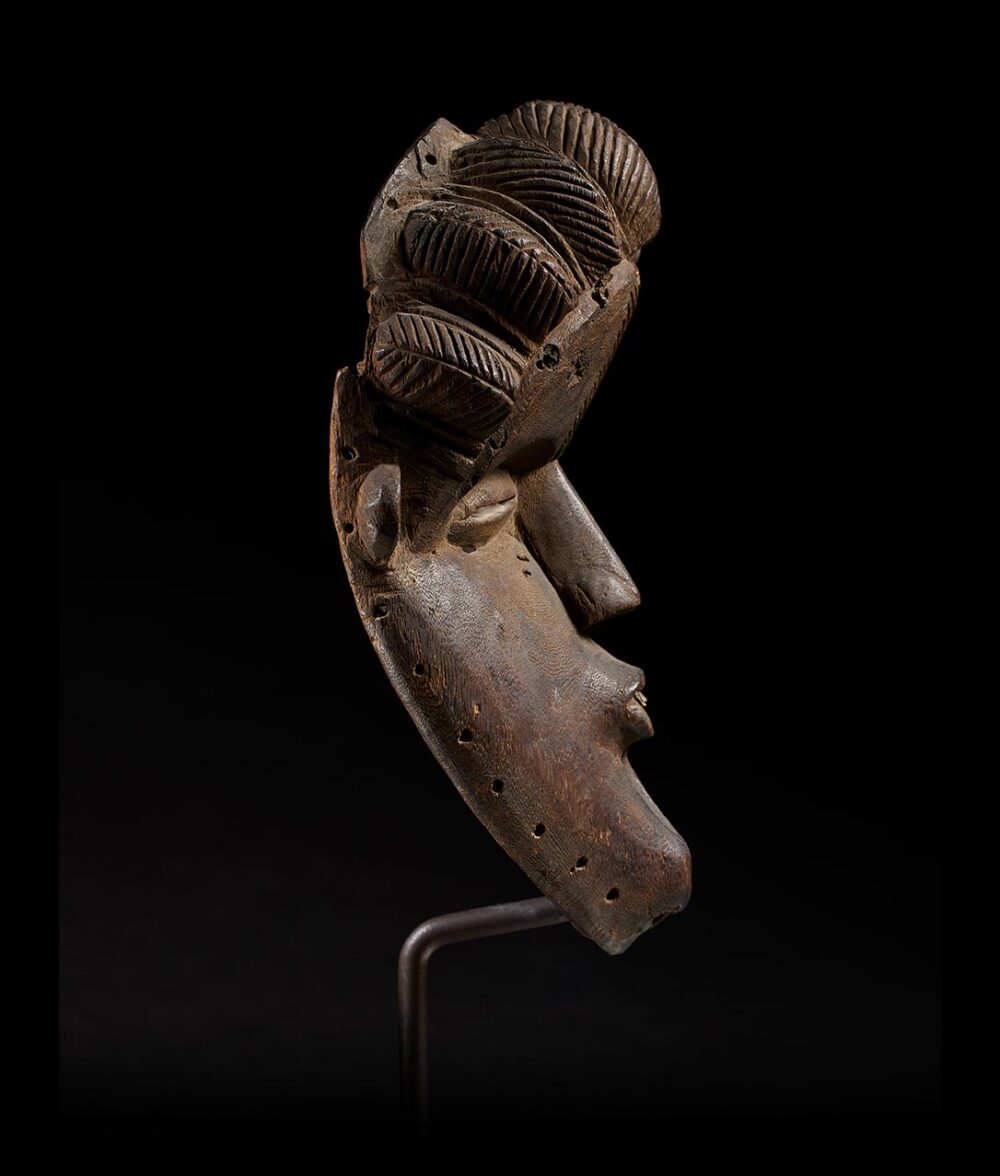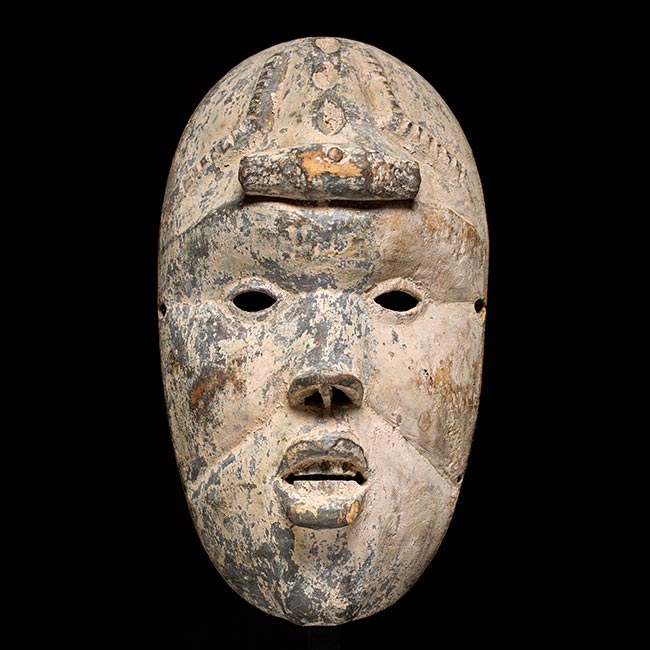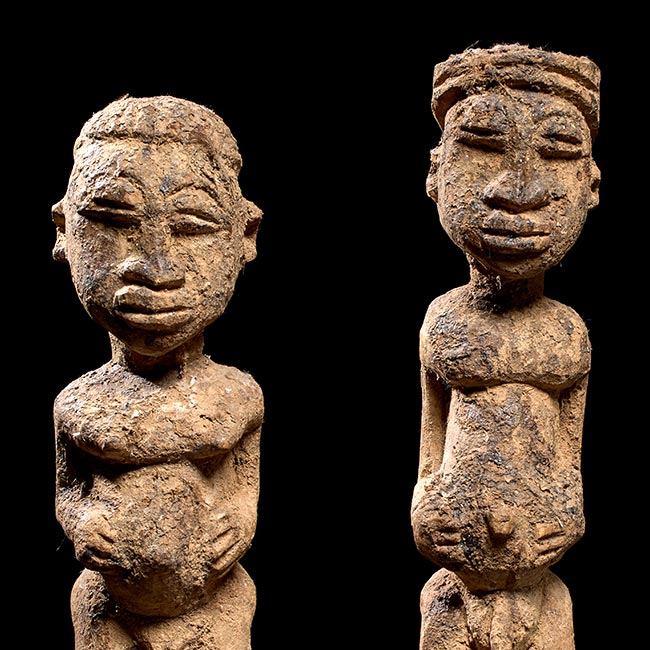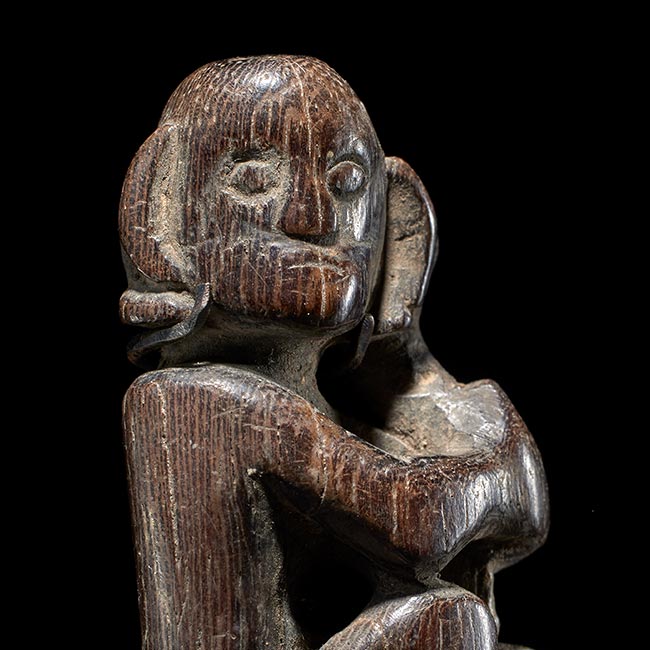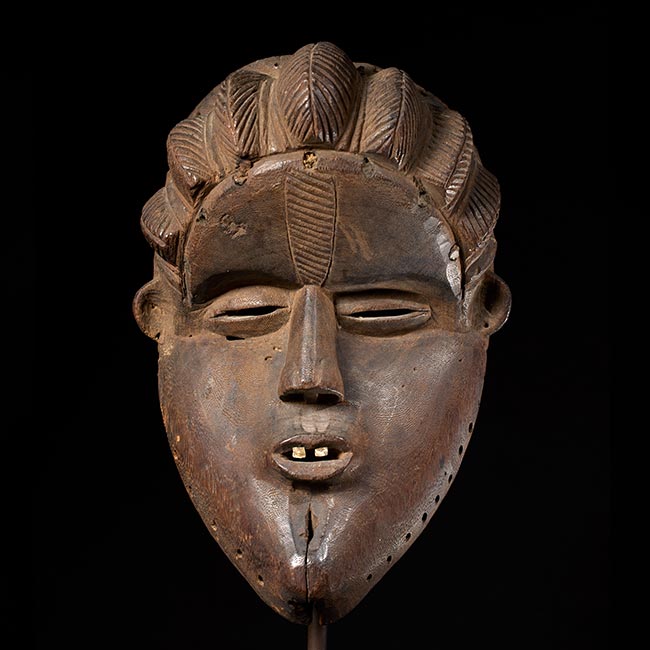Dance Mask
Bassa, Liberia
19th-early 20th c.
Provenance: Fagalde, Monrovia, March 1975
Karob collection-Margarete Wells, Boston
Both the men’s and women’s societies of the Bassa utilize masks in their cultural practices. The mask, often referred to as a Gela, meaning “big spirit,” holds significance in closed meetings exclusive to initiated members of men’s societies, as well as in open festive occasions accessible to all. Its performance entails a remarkably smooth, gliding dance set to the rhythm of slit drums, with dancers moving swiftly as if floating on air.
The facial section of this mask was affixed diagonally to a rattan basketry, cap-like structure. Consequently, the wearer does not peer out through the eyes, even if they are carved open. Instead, vision is facilitated through a slit in the cloth suspended beneath the mask and headdress. The features of this mask, akin to its movements, exude refinement and grace, often associated with femininity. Although worn by men and considered the spirit force of a gender-neutral order, the mask is simultaneously imbued with feminine attributes. The narrow, half-closed eyes and the elaborate hairstyle, featuring a central plait or crest and rows of smaller, symmetrically arranged forms, adhere to Bassa’s standards of feminine beauty. Additionally, the vertical pattern on the forehead, represents a traditional tattoo.
This specific mask exhibits a deep concave form, a finely carved philtrum, and a sensitively rendered open mouth adorned with two exposed aluminum teeth.
Size
Height: 9 in / 22.9 cm
Item
IN 3-8-24 / Price on request
Gallery
Dance Mask
Bassa, Liberia
19th-early 20th c.
Provenance: Fagalde, Monrovia, March 1975
Karob collection-Margarete Wells, Boston
Both the men’s and women’s societies of the Bassa utilize masks in their cultural practices. The mask, often referred to as a Gela, meaning “big spirit,” holds significance in closed meetings exclusive to initiated members of men’s societies, as well as in open festive occasions accessible to all. Its performance entails a remarkably smooth, gliding dance set to the rhythm of slit drums, with dancers moving swiftly as if floating on air.
The facial section of this mask was affixed diagonally to a rattan basketry, cap-like structure. Consequently, the wearer does not peer out through the eyes, even if they are carved open. Instead, vision is facilitated through a slit in the cloth suspended beneath the mask and headdress. The features of this mask, akin to its movements, exude refinement and grace, often associated with femininity. Although worn by men and considered the spirit force of a gender-neutral order, the mask is simultaneously imbued with feminine attributes. The narrow, half-closed eyes and the elaborate hairstyle, featuring a central plait or crest and rows of smaller, symmetrically arranged forms, adhere to Bassa’s standards of feminine beauty. Additionally, the vertical pattern on the forehead, represents a traditional tattoo.
This specific mask exhibits a deep concave form, a finely carved philtrum, and a sensitively rendered open mouth adorned with two exposed aluminum teeth.
Size
Height: 9 in / 22.9 cm
Item
IN 3-8-24 / Price on request





